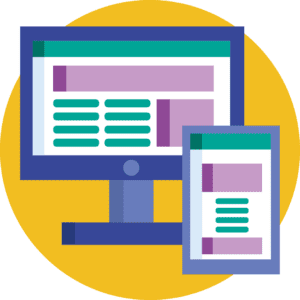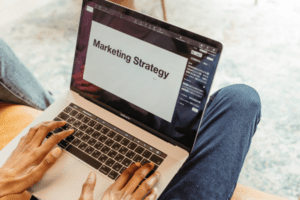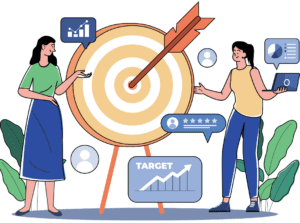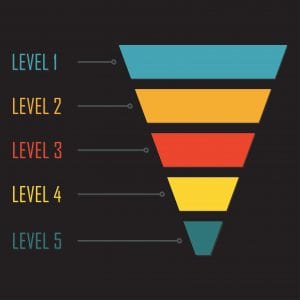
Influencer Marketing Campaigns(B2B): The Shift to Authenticity
Influencer marketing campaigns have long been a core component of business-to-consumer (B2C) strategies, but it’s less commonly associated with B2B businesses. This is largely because B2B marketing often focuses on persuading decision-makers rather than entertaining a broad consumer base. However, it’s worth remembering that every member of a procurement team is more than just a professional—they’re also individuals who might be parents, football fans or podcast enthusiasts. This human element is where the opportunity for B2B influencer marketing lies.
The Unique Nature of B2B Influencer Marketing
B2B audiences aren’t looking for the next trending product—they’re searching for solutions to complex challenges, making authenticity essential. Instead of focusing on mega influencers with high follower counts, B2B businesses can gain more value by collaborating with niche experts, thought leaders and industry insiders who have the trust and respect within their fields.
With longer decision-making cycles and multiple stakeholders involved, B2B influencers who can simplify technical concepts, demonstrate real-world applications and offer practical insights bring far greater value than a standard product endorsement.
Also Read How To Use Social Media To Drive B2B Sales
Without further ado, let’s dive into the emerging trends and the future of influencer marketing:
Authenticity in Action
Trust and authority are crucial in B2B transactions, where decision-makers are more likely to connect with and be influenced by content from reliable, authoritative sources. With their industry expertise and established credibility, B2B influencers bring a level of trust that traditional advertising cannot achieve. Their endorsements can play a pivotal role in shaping supplier perceptions and influencing purchasing decisions.
Rise of Micro-Influencers in B2B
 While celebrity influencers dominate B2C marketing, micro-influencers are emerging as leaders in the B2B space. These influencers often specialize in specific industries or niches, bringing a high level of expertise and relevance to their content. For B2B brands, this provides the opportunity to collaborate with individuals who deeply understand the field or sector in which your business operates.
While celebrity influencers dominate B2C marketing, micro-influencers are emerging as leaders in the B2B space. These influencers often specialize in specific industries or niches, bringing a high level of expertise and relevance to their content. For B2B brands, this provides the opportunity to collaborate with individuals who deeply understand the field or sector in which your business operates.
Why Micro-Influencers Work in B2B:
- Higher Credibility: They bring authentic, firsthand knowledge that resonates with technical or specialized audiences.
- Engaged Networks: Their followers trust them for practical advice and insights, not just surface-level endorsements.
- Tailored Communication: They can address specific challenges, making their content more relevant to B2B buyers.
Also Read Micro Influencer Marketing Benefits
Thought Leadership as the New Influencer Model
In the B2B world, influencer marketing campaigns often go hand-in-hand with thought leadership. Rather than focusing on product promotion, B2B influencers enhance brand awareness by articulating your company’s vision and values through insightful content, meaningful discussions and compelling presentations. This approach not only reinforces your brand’s authority but also helps build stronger, more authentic connections with your audience.
Formats That Work:
- Webinars and Virtual Events: Partnering with an influencer to co-host discussions on industry trends or best practices.
- White Papers and Case Studies: Co-creating in-depth content that demonstrates expertise and the practical value of your solution.
- LinkedIn Collaboration: Leveraging LinkedIn’s professional network to share authentic, high-value content that drives engagement.
Also Read Marketing on TikTok: Strategies to Engage the TikTok Generation
Long-Term Partnerships: Building Lasting Influence in B2B
 In the B2B world, quick, one-off influencer collaborations often fall flat. Long-term partnerships, on the other hand, are far more effective at building trust and driving meaningful results. Collaborating consistently with one or a select group of influencers creates a steady stream of content that helps establish a solid foundation. These ongoing partnerships allow influencers to gain a deeper understanding of the brand’s products, values and audience, resulting in content that is more authentic and relevant.
In the B2B world, quick, one-off influencer collaborations often fall flat. Long-term partnerships, on the other hand, are far more effective at building trust and driving meaningful results. Collaborating consistently with one or a select group of influencers creates a steady stream of content that helps establish a solid foundation. These ongoing partnerships allow influencers to gain a deeper understanding of the brand’s products, values and audience, resulting in content that is more authentic and relevant.
Why Long-Term Partnerships Work:
- Deeper Understanding: Influencers gain insight into your business, enabling them to craft content that speaks directly to your audience’s pain points.
- Increased Credibility: Ongoing collaborations demonstrate the influencer’s genuine belief in your solution, strengthening their advocacy.
- Consistent Messaging: Repeated exposure to the influencer’s content helps reinforce your brand message over time.
The Role of Technology in B2B Influencer Marketing
Technology will play a critical role in enhancing authenticity in B2B influencer marketing campaigns. It enables brands to identify the right influencers, measure campaign success more precisely and deliver engaging, innovative content.
Key Trends to Watch:
- AI-Powered Influencer Identification: Advanced AI tools can analyze factors like audience engagement, content relevance, and alignment with brand values, helping B2B marketers find influencers who truly resonate with their niche audience.
- Data-Driven Campaigns: Instead of relying on surface-level metrics like views or clicks, technology enables B2B companies to measure success through more complex data, such as lead quality, audience sentiment and deal conversions.
- Augmented Reality (AR) Demos: AR technology allows influencers to demonstrate products or solutions in real-time, interactive formats, bridging the gap between abstract concepts and practical applications.
- Blockchain for Transparency: Blockchain technology is emerging as a key tool to ensure transparency and trust in influencer marketing. By verifying influencer credentials, tracking campaign data and validating performance metrics, it strengthens accountability and builds greater confidence in partnerships.




 Patagonia Website
Patagonia Website






















